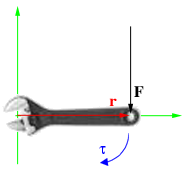Coordinates WGS-84 (GPS) 47.20005°N -91.3669°E
Split Rock Lighthouse is a lighthouse located just south of Silver Bay, Minnesota, USA on the North Shore of Lake Superior. The structure was designed by lighthouse engineer Ralph Russell Tinkham and was completed in 1910 by the United States Lighthouse Service at a cost of $75,000, including the buildings and the land. It is built on a 130-foot (40 m) sheer cliff of anorthosite.
The lighthouse was first lit on July 31, 1910. It was built in response to the loss of ships during the famous Mataafa Storm of 1905, in which 29 ships were lost on Lake Superior. One of these shipwrecks, the Madeira, is located just north of the lighthouse. Compare, Great Lakes Storm of 1913. The tower of the lighthouse is hexagonal and constructed of brick, reinforced with a steel skeleton. It is topped with a steel lantern. The lighthouse features a large third order, bi-valve type Fresnel lens (pronounced [freɪ'nel]) manufactured by Barbier, Bernard and Turenne Company in Paris, France. The lens floats on a bearing surface of liquid mercury.
Originally, the lens was rotated by an elaborate clockwork mechanism that was powered by counterweights running down the center of the tower. When completed, the lighthouse was lighted with an incandescent oil vapor lamp that burned kerosene. In 1940, the station was electrified and the lamp was replaced with a 1000 watt electric bulb.
 Split Rock Lighthouse was built in 1910 in Two Harbors, Minnesota on Lake Superior. It was accessible only by water until 1924 when the North Shore highway was built. The lighthouse closed in 1969, but has been meticulously restored to its pre-1924 appearance and is currently a popular tourist attraction.
Split Rock Lighthouse was built in 1910 in Two Harbors, Minnesota on Lake Superior. It was accessible only by water until 1924 when the North Shore highway was built. The lighthouse closed in 1969, but has been meticulously restored to its pre-1924 appearance and is currently a popular tourist attraction.Stamp Information
This stamp was issued by the United States Postal Service on June 17, 1995 as part of the Great Lakes Lighthouses Issue series.
Split Rock was also outfitted with a fog signal housed in a building next to the light tower. The original signal was a pair of steam sirens driven by two Franklin 30 hp (22 kW) gasoline-driven air compressors manufactured by Chicago Pneumatic Tool Company. In 1932 the gasoline engines were replaced with diesel engines. The steam sirens were replaced with a Type F-2-T diaphone (be-you) type signal in 1936. When the station was electrified four years later, the fog signal began to be powered by electricity. The fog signal was discontinued in 1961. The light was retired in 1969 by the U. S. Coast Guard. The lighthouse is now part of the Split Rock Lighthouse State Park and is operated by the Minnesota Historical Society. The site includes the original tower and lens, the fog signal building, the oil house, and the three keepers' houses. It is restored to appear as it did in the late 1920s. The site was added to the National Register of Historic Places in 1969. Notwithstanding that the light has been retired, every November 10 the lighthouse emits a light in memory of the SS Edmund Fitzgerald which sank on that date in 1975. Split Rock Lighthouse was one of five lighthouses chosen for the "Lighthouses of the Great Lakes" series postage stamp designed by Howard Koslow in 1995. There was one lighthouse chosen on each of the Great Lakes. The five lighthouses are Split Rock Light on Lake Superior, St Joseph Light on Lake Michigan, Spectacle Reef Light on Lake Huron, Marblehead Light (Ohio) on Lake Erie and Thirty Mile Point Light on Lake Ontario.
|
Minnesota Historical Society - Split Rock
3713 Split Rock Lighthouse Rd.
Two Harbors, MN 55616
(218) 226-6372
3713 Split Rock Lighthouse Rd.
Two Harbors, MN 55616
(218) 226-6372































































































.jpg)


















































































































